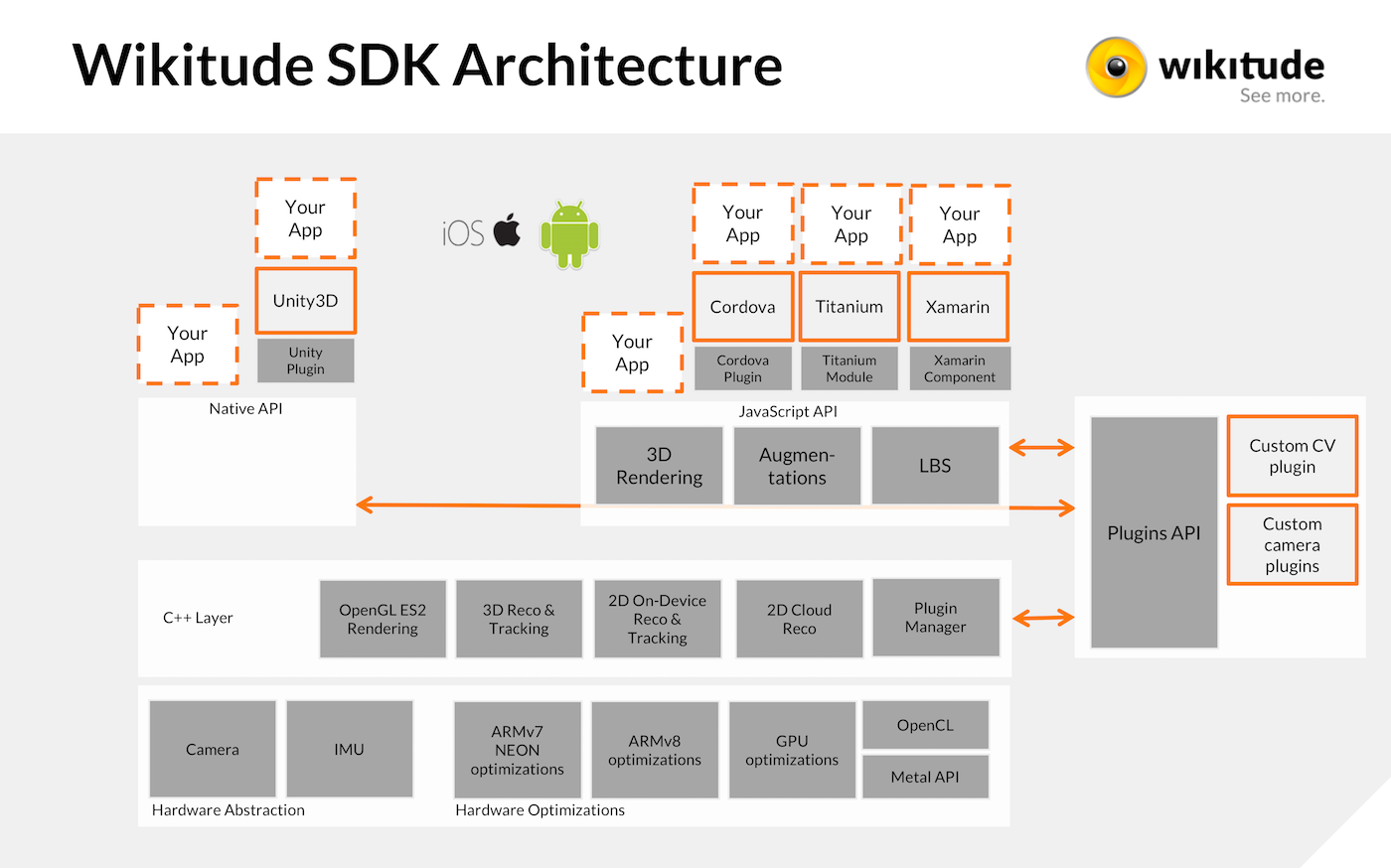Getting started
Welcome to the Wikitude SDK. This document is designed to help you from your very first steps with the Wikitude SDK all the way through to advanced concepts and examples for developing your augmented reality project.
- The plugin is compatible with Unity 5.1.0 and higher, but the samples require at least 5.2.0 to work properly. However, all the samples except for the Camera Settings sample can be run on versions 5.1.x if you delete the
CameraSettingsController.csfrom the scripts folder - Rendering engine
- OpenGL ES 2
- OpenGL ES 3.x
- Because Unity currently doesn't support 64 bit libraries on Android, performance on such devices might be lower than similar devices running iOS 64 bit.
Recommended Usage of this Documentation
The documentation is arranged in a way to guide you through the various steps in your development process. We recommend following each of the steps outlined below and reading the documentation in the order displayed.
Setup your project with the Unity Plugin
In this section we describe the necessary steps to setup a project in a detailed guide.
View the sample application
Viewing the sample requires the corresponding reference image. It is available directly in the description of the sample. You can either view it on your monitor or print it.
The Wikitude Native SDK - Augmented Reality for your own app
The Wikitude Native SDK is a software library and framework for mobile apps used to create augmented reality experiences. The Native SDK supports use cases which require image recognition and tracking technology (vision based augmented reality).
To use the Wikitude Native SDK within a Unity project, simply import the Wikitude.unitypackage into a existing Unity project and import all assets that are part of the .unitypackage. After the import is done, use the WikitudeCamera prefab in combination with a ImageTracker or CloudTracker prefab.
Architecture of the Wikitude SDK

The image above shows the different components of the Wikitude SDK and possible approaches for creating augmented reality apps. Each of these approaches are based on a certain development environments (IDE) and platforms:
- Computer Vision Engine: The computer vision engine is a core component of the Wikitude SDK and used by all platforms. It is not directly accessible, but wrapped either by the Native API or the JavaScript API.
- Wikitude SDK - Native API: Provides access to the Wikitude computer vision engine natively for Android (Java) and iOS (ObjC). It also can load plugins via the Wikitude Plugins API.
- Wikitude SDK - JavaScript API: Allows to build augmented reality worlds on basis of HTML and JavaScript. It is available for Android and iOS. The JavaScript API provides access to the functionality of the computer vision engine, location based AR, the Plugins API and dedicated rendering functionality.
- Wikitude SDK - Plugins API: An API to connect your own plugins to the Wikitude SDK. (NOTE: Wikitude SDK plugins have nothing to do with the Cordova or Unity Plugin concept.)
- Wikitude SDK - Cordova Plugin: On top of the JavaScript API the Cordova plugin allows to use the Wikitude SDK in combination with Apache Cordova.
- Wikitude SDK - Titanium Module: On top of the JavaScript API the Titanium module allows to use the Wikitude SDK in combination with Titanium.
- Wikitude SDK - Unity Plugin: On top of the Native API the Unity plugin allows to use the Wikitude SDK in combination with Unity.
- Wikitude SDK - Xamarin Component: On top of the JavaScript API the Xamarin component allows to use the Wikitude SDK in combination with Xamarin.
The Wikitude Developer Portal
The Wikitude Developer Section should be your first stop when you have specific development related questions. The portal hosts a very active Developer Community Forum where Wikitude staff members are constantly assisting other developers with helpful tips and advice. You can find How-To's and a constantly evolving FAQ section there as well.
Feedback and Contact
We are always interested in your feedback and suggestions how we can improve this documentation. Please use the contact form on our website or visit us on Google+, Facebook or Twitter.